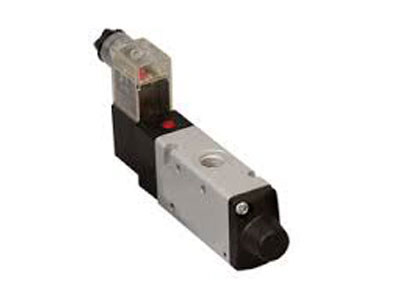What Is A Flow Balancing Valve?
Key Takeaway
A flow balancing valve is designed to ensure that the flow rate in a system is evenly distributed across multiple branches or circuits. It helps maintain consistent flow rates, especially in large systems like HVAC or district heating. By regulating flow through each branch, the valve ensures that no section of the system is under or over-served.
The flow balancing valve adjusts automatically based on the resistance in the system, compensating for pressure changes or variations in demand. This improves the overall system efficiency, reduces energy waste, and enhances performance. It’s a crucial component in multi-zone systems to ensure that each part gets the proper fluid flow.
Overview of Flow Balancing Valves and Their Purpose
Flow balancing valves serve the essential function of ensuring that the fluid flow in a system is evenly distributed across multiple branches or loops. In systems with multiple circuits, such as HVAC or water distribution networks, flow balancing valves help prevent over- or under-flow conditions in each loop, optimizing the system’s overall efficiency. These valves regulate the flow to meet the required parameters, ensuring that the fluid is distributed to all areas without causing excessive pressure or unnecessary energy consumption.
The main purpose of a flow balancing valve is to maintain system performance, prevent damage to equipment, and ensure that each section of the system receives the right amount of flow.

How Flow Balancing Valves Regulate Flow in Multi-Loop Systems
In multi-loop systems, such as in HVAC or district heating networks, multiple fluid circuits must be managed simultaneously. Flow balancing valves regulate the amount of fluid that flows through each loop to ensure equal distribution. The valves adjust based on variations in pressure, ensuring that each circuit gets the correct flow rate, regardless of changes in system conditions, such as temperature fluctuations or pressure imbalances.
These valves use a mechanism that automatically adjusts to maintain a constant flow rate, reducing the need for manual adjustments and improving system efficiency. This ensures that the right amount of fluid reaches each section, optimizing the operation and reducing energy waste.
The Role of Flow Balancing Valves in HVAC Systems
In HVAC systems, flow balancing valves play a critical role in maintaining the desired temperature and comfort levels throughout the building. These systems often include multiple heating or cooling loops that serve different areas or rooms. Without proper flow distribution, some areas may become over- or under-heated, leading to inefficiencies and discomfort.
Flow balancing valves in HVAC systems ensure that each loop receives the right amount of fluid, maintaining consistent temperatures across the system. They help regulate the flow of hot or cold water, allowing the system to achieve optimal performance while minimizing energy consumption. This improves the system’s overall efficiency and reduces the workload on pumps and other components.
Comparing Flow Balancing Valves to Other Flow Control Methods
Flow balancing valves differ from other flow control methods, such as manual balancing, pressure-regulated valves, or fixed orifice devices. Here’s how they compare:
1. Manual Balancing: In manual balancing, the flow is adjusted by hand using valves at each branch. This method can be time-consuming and may not account for system changes, leading to inefficiencies.
2. Pressure-Regulated Valves: Pressure-regulated valves adjust based on changes in system pressure but do not directly control the flow rate. They are less precise than flow balancing valves, which actively manage flow across multiple loops.
3. Fixed Orifice Devices: Fixed orifices allow a constant flow through a system but are not adjustable. Flow balancing valves, on the other hand, adjust dynamically to ensure each loop receives the correct flow rate.
Flow balancing valves offer more precise, automated control, making them a better solution for complex systems requiring continuous, accurate flow regulation.
Benefits of Using Flow Balancing Valves in Complex Systems
The use of flow balancing valves in complex systems offers several significant benefits:
1. Improved System Efficiency: By ensuring an even distribution of flow, these valves help the system operate more efficiently, reducing energy consumption and optimizing performance.
2. Reduced Wear and Tear: Flow balancing valves help prevent issues like excessive pressure or flow in certain sections, reducing strain on system components and extending their lifespan.
3. Enhanced Comfort and Performance: In HVAC systems, they ensure that temperature regulation is consistent throughout the building, enhancing comfort and occupant satisfaction.
4. Lower Operational Costs: Efficient flow distribution helps reduce energy usage, leading to lower operational costs over time.
5. Automatic Adjustment: Flow balancing valves adjust automatically based on system conditions, reducing the need for manual intervention and simplifying system maintenance.
These benefits make flow balancing valves an essential component in modern fluid systems, especially in industries like HVAC, water distribution, and industrial processes.
Conclusion
Flow balancing valves are crucial for maintaining efficient flow distribution in complex systems, particularly in HVAC and water distribution networks. They ensure that fluid is evenly distributed across all loops, optimizing system performance, reducing energy waste, and improving operational efficiency. By automatically adjusting flow rates based on system conditions, flow balancing valves offer significant advantages over manual or fixed-flow methods, making them an indispensable tool for achieving consistent and reliable system performance.
